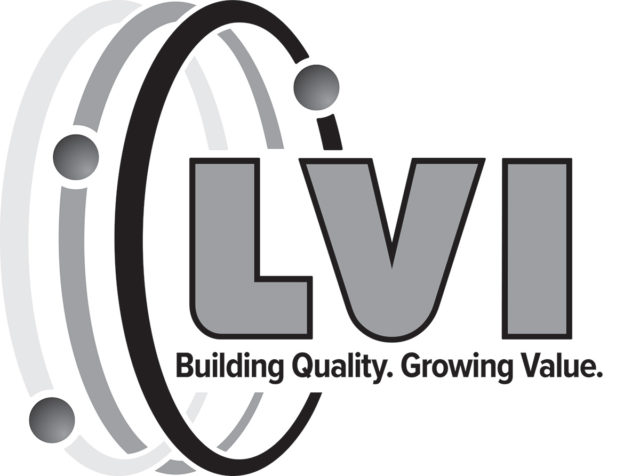- 2022 DMC enrollment deadline nears
- IDFA releases FMMO study report
- USDA funding ‘pop-up’ site to boost dairy, ag exports
- IDFA: Dairy Exporter Working Group formed
- GDT price index up again
- Input costs and availability weigh down producer sentiment
- October 2021 mailbox, all-milk price spread increased
2022 DMC sign-up deadline nears
The sign-up deadline for the 2022 Dairy Margin Coverage (DMC) program is now about two weeks away. Small and midsized producers eligible to make milk production history adjustments under the Supplemental DMC must also do so before the Feb. 18 deadline. Producers are urged to call their local USDA Farm Service Agency (FSA) office to schedule an appointment.
Applications for Supplemental DMC payments will require a revision to a producer’s 2021 DMC contract and must occur before DMC enrollment for 2022. The program limits Supplemental DMC payment to cover 75% of the difference between an eligible dairy operation’s actual 2019 milk marketings and its previous DMC milk marketing history. Eligible producers must provide FSA officials with their 2019 milk marketing statements, and DMC premiums are required on enrolled supplemental production at the standard premium rate.
Feed prices were up but milk prices rose even more in December, meaning there will be no DMC program indemnity payments at any level for December milk marketings. Read: December DMC margin hits $9.53 per cwt.
Through Jan. 31, 2021, DMC payments totaled about $1.185 billion.
IDFA releases FMMO study report
The International Dairy Foods Association (IDFA) has released a working paper, Modernizing U.S. Milk Pricing: An Exploration.
The 130-page report is authored by Marin Bozic, University of Minnesota dairy economist, and staff with Blimling and Associates, a dairy market research and consulting firm. The study was commissioned by IDFA at the request of the organization’s Economic Policy Committee, a group of more than 80 IDFA member company representatives from throughout the full dairy supply chain.
The study does not make recommendations; instead, it is a landscape overview of global milk pricing and competitiveness intended to serve a resource for further discussion among IDFA members regarding issues related to the Federal Milk Marketing Order (FMMO) system.
IDFA represents the nation’s dairy manufacturing and marketing industry. Its membership represents about 90% of the milk, cheese, ice cream, yogurt and dairy ingredients produced and marketed in the U.S.
USDA funding ‘pop-up’ site to boost dairy, ag exports
The USDA will provide funding support for a 25-acre “pop-up” site at the Port of Oakland, designed to streamline the export of dairy and other agricultural commodities. Secretary of Agriculture Tom Vilsack announced the program during a “supply chain crisis” webinar, Jan. 31, hosted by the National Milk Producers Federation (NMPF) and the U.S. Dairy Export Council (USDEC).
Using Commodity Credit Corporation funds, the USDA will cover 60% of the startup costs of the site, expected to be operational in March. The site will have a dedicated gate to reduce bottlenecks at the main entrance to the port, allowing agricultural companies and cooperatives easier access to shipping containers, and the ability to pre-cool refrigerated shipping containers. Following establishment, the USDA will provide $125 per container to cover movement logistics costs.
Jim Mulhern, president and CEO of NMPF, estimated export shipping delays and disruptions had cost the U.S. dairy industry more than $1.3 billion through just the first three quarters of 2021.
“Congestion in and around U.S. ports is one of a series of export supply chain challenges undercutting U.S. dairy exporters’ ability to reliably meet the needs of overseas customers for high-quality U.S. dairy products,” said Krysta Harden, president and CEO of USDEC.
IDFA: Dairy Exporter Working Group formed
Last week, the IDFA, the Port of Los Angeles and shipping and logistics company CMA CGM announced the formation of a Dairy Exports Working Group.
Created to identify and address supply chain issues hampering U.S. dairy product exports, the group will focus on seaports on the West Coast of the U.S., where a majority of dairy products begin their export journey. The group will also seek opportunities to streamline the movement of products from the interior of the U.S. to the West Coast.
Specifically, the Dairy Exports Working Group will explore ways to consolidate and streamline U.S. dairy exports from multiple suppliers, as well as seek ways to reduce the number of empty containers leaving U.S. ports.
“U.S. dairy exports reached a near-record $6.4 billion in 2020 and continued to set a blazing pace in 2021 due to surging global demand, but the U.S. dairy industry could be exporting much more to destinations around the world if there was more reliability and predictability in the supply chain,” said Michael Dykes, president and CEO of IDFA.
GDT price index up again
The third Global Dairy Trade (GDT) auction of 2022, held Feb. 1, saw dairy prices move higher, with the overall index up 4.1%. By category, dairy product prices were:
- Skim milk powder was up 2.1% to $4,051 per metric ton (MT, or about 2,205 pounds).
- Whole milk powder was up 5.8% to $4,324 per MT.
- Butter was up 3.3% to $6,359 per MT.
- Cheddar cheese was up 2.4% to $5,684 per MT.
- Anhydrous milkfat was up 1.4% to $6,800 per MT.
The GDT platform offers dairy products from six global companies: Fonterra (New Zealand), Dairy America (U.S.), Amul (India), Arla (Denmark), Arla Foods Ingredients (Denmark) and Polish Dairy (Poland). The next GDT auction is Feb. 15.
Input costs and availability weigh down producer sentiment
Escalating costs and supply chain concerns contributed to a weaker perception of farm financial conditions in the monthly Purdue University/CME Group Ag Economy Barometer survey.
“The sharp drop in the financial performance index this month indicates producers expect a sharp decline in income in 2022 compared to 2021,” said James Mintert, the barometer’s principal investigator and director of Purdue University’s Center for Commercial Agriculture.
Compared to the previous month’s survey, more survey respondents said they planned to reduce investments in farm machinery and farm construction. Over 40% of producers reported that low farm machinery inventories were holding back their purchase plans.
Supply chain concerns extended beyond farm machinery and farm building and/or grain bin construction plans. Disruptions in the supply chain for many farm inputs, coupled with strong demand, are pushing production costs higher. Fifty-seven percent of survey respondents in January said they expect farm input prices to rise by 20% or more in 2022, and 34% of producers said they expect prices to rise by 30% or more.
The disruptions extend not just to input pricing, but also input availability. In January, 28% of producers responding to the survey said they have had difficulty purchasing crop inputs from suppliers for the 2022 crop season. In a follow-up question posed to producers experiencing difficulty in procuring crop inputs, respondents reported difficulty in purchasing a broad spectrum of crop inputs including herbicides, insecticides, fertilizer and farm machinery parts.
The Ag Economy Barometer provides a monthly snapshot of farmer sentiment regarding the state of the agricultural economy. The survey collects responses from 400 producers whose annual market value of production is equal to or exceeds $500,000. Minimum targets by enterprise are as follows: 53% corn/soybeans, 14% wheat, 3% cotton, 19% beef cattle, 5% dairy and 6% hogs. Latest survey results, released Oct. 5, reflect ag producer outlooks as of Jan. 17-21.
October 2021 mailbox, all-milk price spread increased
Two monthly average milk prices announced by the USDA both improved for October milk marketings. However, with six of seven FMMOs reporting negative producer price differentials (PPDs) that month, the spread between the average “all milk” and “mailbox” prices widened.
Based on Progressive Dairy calculations, October 2021 mailbox prices were $1.16 per hundredweight (cwt) less than the all-milk prices for comparable states and regions. That was the largest difference since May 2021, a month in which PPDs were negative in all applicable FMMOs. Mailbox prices averaged about 86 cents per cwt less than all milk prices in July-September.
The all-milk price is the estimated gross milk price received by dairy producers and includes quality, quantity and other premiums but does not include marketing costs and other deductions.
The mailbox price is the estimated net price received by producers for milk, including all payments received for milk sold, and deducting costs associated with marketing.
The price announcements reflect similar – but not exactly the same – geographic areas. The USDA National Ag Statistics Service (NASS) reports monthly average all-milk prices for the 24 major dairy states. The mailbox prices are reported by the USDA’s Agricultural Marketing Service (AMS) and covers selected FMMO marketing areas. The AMS announcement of mailbox prices generally lag all-milk prices by a couple of months.
A wide Class III-IV spread, along with the fact the Class III prices was higher than the Class I base price for October, provided incentives for Class III depooling in several FMMOs that month. And after four months in positive territory, October baseline PPDs turned negative in Upper Midwest, Central, Mideast, California, Pacific Northwest and Southwest FMMOs. The Northeast FMMO was the lone exception, with a PPD at 61 cents in the positive. However, compared to September, the base PPDs in all FMMOs utilizing multiple component pricing dipped about 80 cents per cwt.
Read: October brought return of depooling, negative PPDs.
Through the first 10 months of 2021, the USDA’s mailbox prices averaged about $1.07 per cwt less than average all-milk prices for the same months. During that period, all-milk prices averaged $18.17 per cwt, while mailbox prices averaged $17.10 per cwt.
The difference in the two announced prices can affect dairy risk management, since indemnity payments under the DMC, Dairy Revenue Protection (Dairy-RP) and Livestock Gross Margin for Dairy (LGM-Dairy) programs are all based on the all-milk price, before any marketing cost deductions. ![]()
-
Dave Natzke
- Editor
- Progressive Dairy
- Email Dave Natzke











